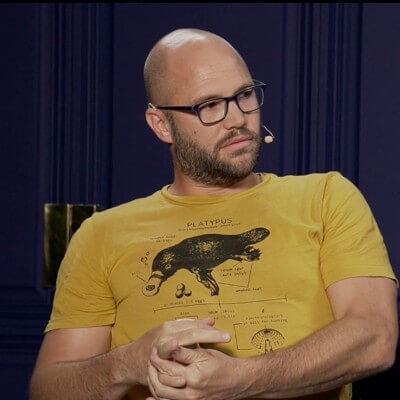As remote work continues to build momentum, organizations looking to attract and keep top talent need to prioritize creating a positive remote employee experience.
To help you better understand and implement the process, we’re sharing the what, why, and how of a great remote employee experience.
What is remote employee experience?
Remote employee experience refers to the overall experience a remote employee undergoes while working in a remote organization.
It covers a complete set of factors and processes that make up the experience — from remote work tools and communication policies to team connections and wellness programs.
How to create a great remote employee experience?
To help you devise the perfect strategy for crafting a positive remote employee experience, we’re sharing the best tips from 16 leaders and HR and culture experts.
Optimize the experience for the remote setting
CEO and Owner at TeamBuilding, Michael Alexis, shares that organizations looking to improve remote employee experience need to reinvent the culture to better suit the remote work model:

“If you want to create a great experience for remote workers, then you need to customize those experiences for a remote setting.
For example, a successful virtual happy hour isn’t just a happy hour that takes place online. If you focus on drinks and conversation, a video call can fall flat. Instead, you need to plan more structured icebreakers, games, and activities.”
Foster effective communication
According to Jamie Jacobs, HR expert and Co-Founder of Gig Talent, effective communication is a key component when creating a healthy remote employee experience:

“While it can be impossible to know what is going on with everyone you manage — especially in a remote environment — making time for check-ins, opening up a conversation to answer questions they may have, and even asking something simple like how their week is going makes a huge difference in employee engagement — and creates a better understanding of expectations and responsibilities from both sides.”
Streamline your communication
Director of People at Geeks Ltd, Dehan Matthee points out the importance of prioritizing overcommunication and streamlining communication when working to deliver a great remote worker employee experience:

“My #1 tip for creating a great employee experience for remote workers is to go out of your way to communicate. This is important as it allows employees to ask questions and voice any concerns they may have in order to ensure everyone is on the same page and working towards the same goal.
It is also important to use the same communication tools for all employees, regardless of whether they are based in an office or remote.
This ensures that everyone is on the same playing field and that you are treating everyone equally.”
Optimize your communication technology to better support your employees
Our next tip for creating a great remote worker employee experience comes from Melanie Haniph — B2B HR Content Strategist and Consultant.
Haniph suggests diversifying your communication tools to offer more flexible alternatives for your remote employees to connect:

“The best way to create a great employee experience for remote workers is to offer several options for them to connect. Don’t assume that everyone communicates or collaborates the best via Zoom. Collaboration platforms such as Trello and Pumble, or even the old-fashioned phone call or email, can also do the trick. These alternatives also spare employees from “Zoom fatigue” and feeling like they always have to be on and camera-ready.”
Create a customized inclusion experience
According to Kai Stowers, an independent Coach and Consultant specializing in Organization Development and DEI:

“Creating a customized experience for the employees you have is crucial for creating a healthy and engaging remote workplace environment.
For outgoing, people-oriented employees, creating community and connection is essential. Group texts, Pumble channels, and social Zoom calls are the oxygen these employees need to thrive.
For employees who engage in deep thought and analysis, minimizing meetings and team-building activities helps them thrive. These employees often prefer to build connections by partnering together on a work project rather than interacting in social situations.”
Adopt an individualized approach to creating a great remote worker employee experience
Similarly to the previous point, Megan Leasher, a talent enthusiast and a Forbes HR Council Member, suggests organizations should try to cater to individual needs and preferences when designing a positive remote work environment for employees:

“What “balance” looks like to one person is not likely to match others’ views, and what “flexibility” means to one person is very likely different than if you asked others. Individualized approaches are the cornerstone to a great remote work experience; individuals are heard and help craft the story of what they want their remote experience to be and feel like.”
Promote a positive company culture
Head of Marketing at Career Portal — James Rice — highlights the importance of relationship building in promoting a positive remote-first culture:

“Provide ways for employees to connect outside of work that reflect how people interact socially in an office environment, which can help foster a sense of belonging in the company.”
Maintain a virtual open-door culture
Another great perspective on how to create a great remote worker employee experience comes from Melissa Dexter, Chief People Officer at Uprise Health.
Dexter shares two key points integral to creating a positive work environment for the remote workforce:

“Let employees know you always have an open virtual door for a quick check-in or a longer collaborative discussion. Creating that open-door culture in a remote environment is tough, but continual reminders will resonate with staff and help them feel as though they are a major part of the team.”
Structure a complete process for remote employee experience
Head of People and Culture at Dreamcraft Ventures, Nico Blier-Silvestri, believes that there are four main points to creating a great remote worker employee experience:

- “Create a flow of information that signals to the newcomer that the company is in control so they don’t need to be.
- Experiment, test, get feedback, and improve.
- Be deliberate in recreating the informal encounters that require extra effort, but give valuable informal information.
- Pay attention to the messages that you feel are not coming across.”
Maintain employee engagement and provide mental and physical health resources
According to Rachel Neill, CEO and Founder of Carex Consulting Group, facilitating a great remote worker employee experience requires two main components:

- “It’s important to always have opportunities for engagement. You have to make sure you’re regularly checking in with your employees and staying in communication.
- Employers must offer workers improved mental and physical health offerings, such as free or discounted access to therapists and to mental health apps that are part of a broader workplace health program.”
Encourage team connection
Another valuable tip for creating a great remote worker employee experience comes from Erin Mohideen, People and Culture Lead at Inspirant Group:

“My #1 tip for creating a great employee experience for remote workers is to foster relationships — not only with one’s direct manager but across the organization. Even though employees are not traveling to an office every day, people need to feel connected to the work they’re doing and the people they’re working with.”
Arrange regular check-ins
Founder and SEO of Arnowitz Culture Agency, David Arnowitz, suggests creating opportunities for daily communication as a way of improving team socialization and creating a positive remote worker employee experience:

“One way to create a positive employee experience for remote workers is to schedule daily meetups to promote socialization for teams.
Having short daily standup meetings allows individuals to feel part of a team, fostering psychological safety and dependability, creating structure and clarity of role, and providing meaning and impact of their work.”
Organize regular one-on-one meetings with employees
Conscious Leadership Coach, Meredith Turney, highlights the importance of regular one-on-one meetings in creating a personalized approach to building employee engagement:

“The #1 thing I recommend to leaders to build a strong remote team and ensure employees are engaged is to spend 1:1 time with each employee and create virtual meetings that engage the whole team.”
Prioritize employee well-being
Another great tip for designing a positive remote worker employee experience comes from Carolyn Betts, Founder and CEO of Betts:

“My top tip for creating a great employee experience for remote workers is to prioritize listening to the needs of current employees, including optimizing employees’ mental health and well-being.”
Set up a recognition and reward system
VP of Marketing at Motivosity, Logan Mallory, believes that employee recognition plays one of the key roles in creating a great remote worker employee experience:

“My number one tip for creating a great employee experience for remote workers is to increase recognition. Employees are happiest when they feel appreciated at work, and recognition is free — so be generous with your praise.”
Host regular virtual team events
According to Sammy Courtright, Co-Founder at Ten Spot, regular virtual social events can enhance remote workers’ employee experience:

“The most important thing that every company should be doing to create a great experience for remote workers is hosting a variety of virtual social events. Not only do virtual social events help employees feel more connected to their colleagues, but they help 60% of employees feel more engaged and productive at work.”
—
Further reading
This is just a summary of an article previously published on the Pumble blog.
To learn more about creating a great remote worker employee experience, we recommend reading the full article:

